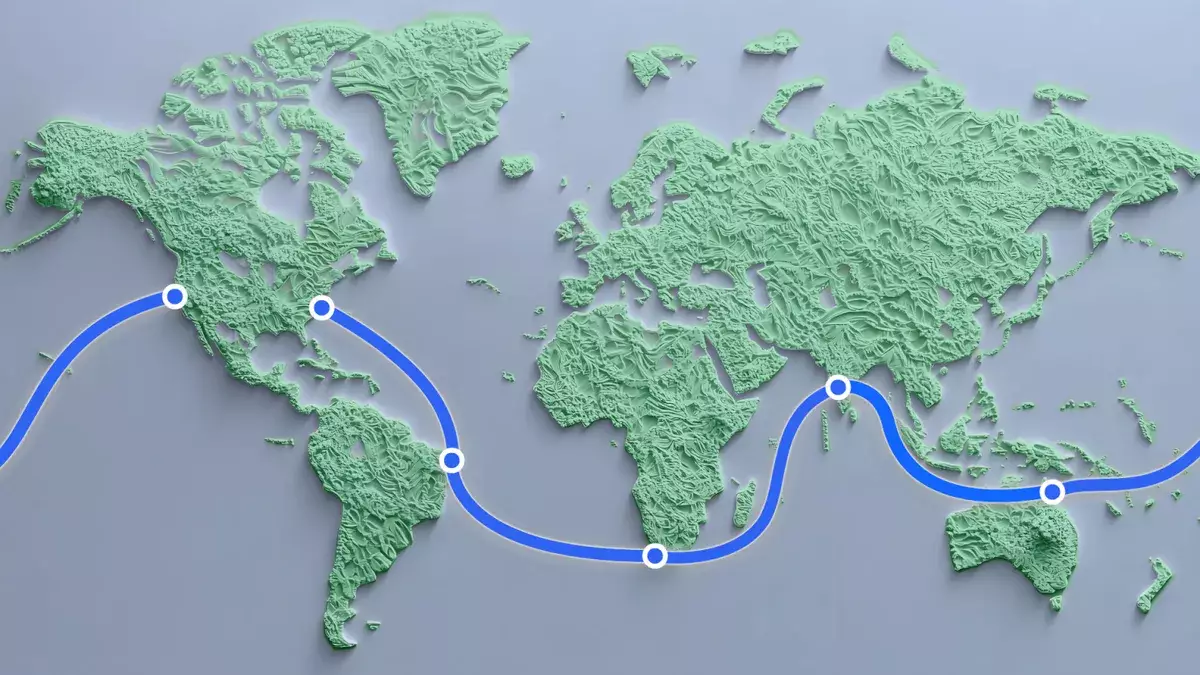In the rapidly advancing technological landscape of 2025, where wireless communications dominate our everyday experiences, it is easy to forget the essential physical infrastructure that makes global connectivity feasible. Despite our inclination towards wireless solutions, a staggering 98% of internet traffic still relies on extensive undersea cabling. This unassuming reality underscores Meta’s latest venture: Project Waterworth, a colossal internet cable initiative intended to redefine the parameters of global telecommunications.
Project Waterworth is poised to be a monumental split at sea, stretching over 31,000 miles (approximately 50,000 kilometers), which surpasses the geographical constraints of our planet. To put this in perspective, the circumference of the Earth is just under 25,000 miles. The ambitious plan entails connecting prominent locations across several continents, specifically jumpstarting connectivity between the United States, India, South Africa, Brazil, and Australia.
According to Meta’s detailed proposal, the cable will traverse a complex route beginning on the eastern seaboard of the US, making its way down south to Brazil before skimming across the Atlantic Ocean. The path continues around the southern tip of Africa, then proceeds to Mumbai, India, and ultimately wraps around to Queensland, Australia, before concluding its aquatic journey back on the Californian coastline.
One of the most remarkable aspects of Project Waterworth lies in its engineering ingenuity. The cable will be laid at depths reaching up to 4 miles (approximately 7 kilometers), far below the surface of the ocean. While it may seem counterintuitive to opt for such expansive underwater routes in an age dominated by wireless technology, it reinforces the reliability and speed of internet communication. By establishing three new oceanic corridors, Meta aims to not only enhance capacity but also improve connectivity essential for the increasing demands of artificial intelligence and other transformative technologies.
According to Meta’s official statements, their engineering plans employ innovative designs to bolster the cable’s resilience. Yet, this is not merely about creating the longest cable in the world. The company is dedicated to maximizing efficiency and reliability by implementing advanced routing systems and burial techniques around high-risk fault areas. This is particularly vital in environments prone to disruption from ship anchors and environmental hazards.
Meta’s determination to invest in colossal infrastructure projects like Project Waterworth presents a unique aspect of the technology giant. While many scrutinize the company for its role in facilitating online disinformation and polarizing conversations within social media, this project is a concrete reminder of the substantial groundwork required to keep the digital world operational.
However, it is critical to approach Meta’s efforts with a discerning lens. CEO Mark Zuckerberg’s controversial decision to move away from traditional fact-checking mechanisms in favor of community-based oversight raises questions about accountability and responsibility within the realm of social media. Although this transition is justified by the desire to preserve freedom of expression and minimize undue censorship, it simultaneously risk undermining the integrity of information shared on such platforms.
While Project Waterworth signifies Meta’s commitment to investing in essential infrastructure, it also highlights the complex nature of the company’s role in shaping modern communication. The juxtaposition of groundbreaking projects against a backdrop of social media challenges creates a nuanced portrait of an organization navigating both technological innovation and societal impact. As we advance towards a more interconnected world, the balance between enhancing infrastructure and ensuring responsible digital citizenship remains pivotal. The successful implementation of Oceanic corridors, as spearheaded by Meta, may redefine global communication standards and shape the future of how we engage with technology, but it will invariably rest on a foundation of ethical stewardship.
Ultimately, Project Waterworth not only symbolizes the ambition of transcending geographical limitations, but it also serves as a call for greater responsibility and accountability in the digital age.

